Upside-down gardening: April in Golden Central
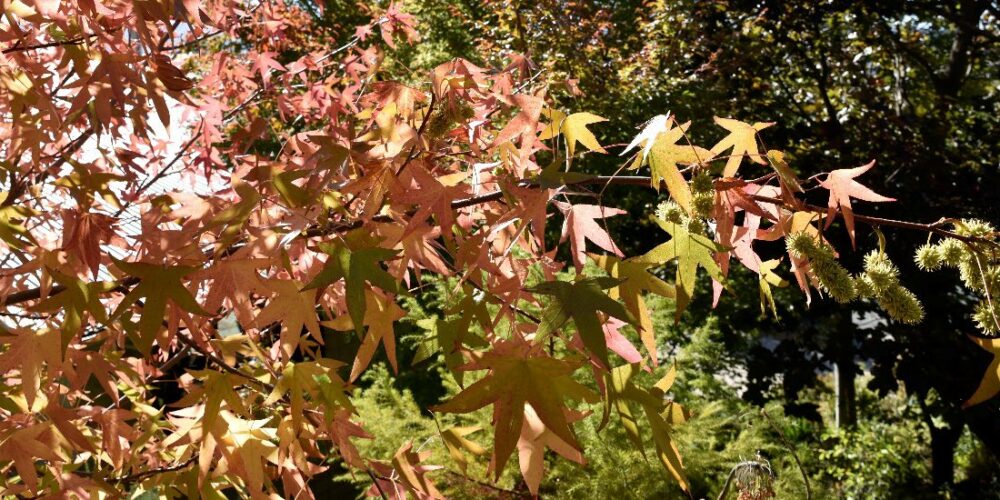
Gold rush
Central Otago is known as “Golden Central”, not just because of memories of the gold rush, but also because the tussock grass and distinctive poplars of the region have a beautiful golden colour in Autumn. The orchardists in this area use poplars as windbreaks to protect their fruit trees. They are also useful on steep slopes to bind the soil and prevent slips.
They look beautiful in the landscape, but in the garden, they are a real pest. They can send out suckers over a long distance, and you’ll find deep-rooted baby poplars popping up everywhere, often in rocks where you just can’t pull them out. The only way to get rid of them is to cut them and dab them with weedkiller. Even this may not work first time and if you don’t want your plants to have their light, food, space and water stolen by the fast-growing young trees, you will have to cut and dab again.
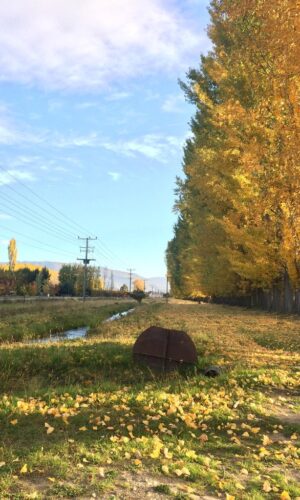
Glorious autumn colours
Liquidambar
If you are lucky enough to have space for deciduous trees in the garden, they are a fantastic asset. They protect us and our plants from the worst of the fierce summer sun and then in the autumn, they put on a glorious display, before conveniently losing their leaves before winter, when we are grateful for every bit of sunshine. Of course, you need to choose the variety carefully to suit the location. We benefit from the trees on our neighbours’ property, as they give our garden a borrowed landscape. I can see this glorious liquidambar, as well as some attractive acers, from our kitchen window.

Rhus typhina (staghorn sumac)
This is another beauty, and it doesn’t get too big, being more like a large shrub than a small tree. You should be careful where you place it, though, because it produces suckers, and its offspring will pop up everywhere. I’m planning to obtain one for the very steep rock-face behind our house. It will help to stabilise the slope and will be far enough away from garden beds not to be a nuisance.

Inspiring gardens
Evocative autumnal arrangement
This garden is one I pass frequently when I walk for exercise. It looks beautiful at all times of the year. This arrangement of hydrangeas, with their evocative faded autumn flowers, agapanthus, New Zealand flax, dahlias, and paeony leaves rivalling the autumn colours of the golden rain tree, the acer and the rowan berries is something to aspire to.
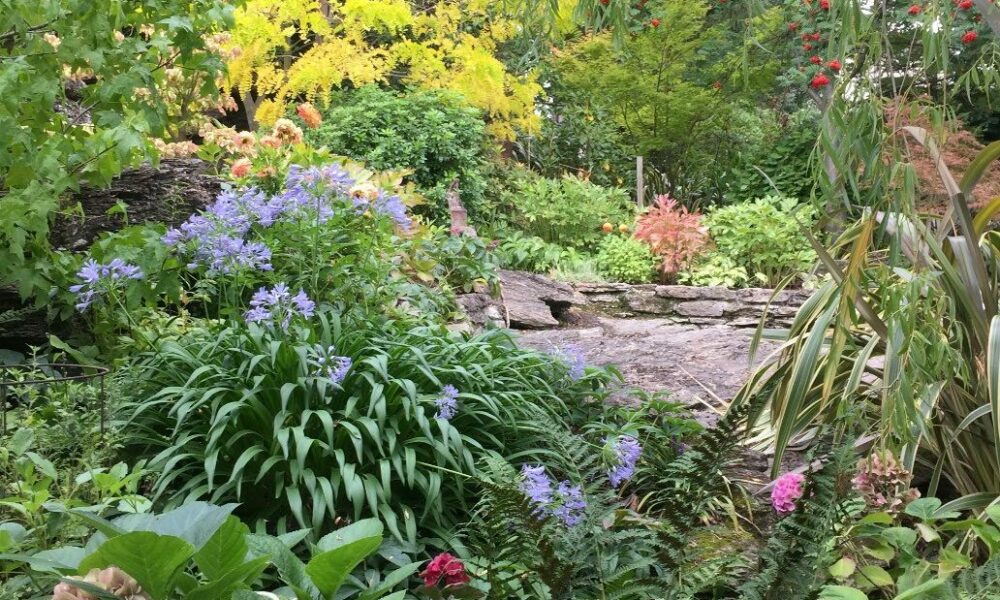
Dazzling zinnias
This exuberant patch of colour in one of the gardens in the town definitely had me heading for the seed catalogues to buy some zinnia seeds for next year. Zinnias are annuals, just what you need to brighten a dull patch.
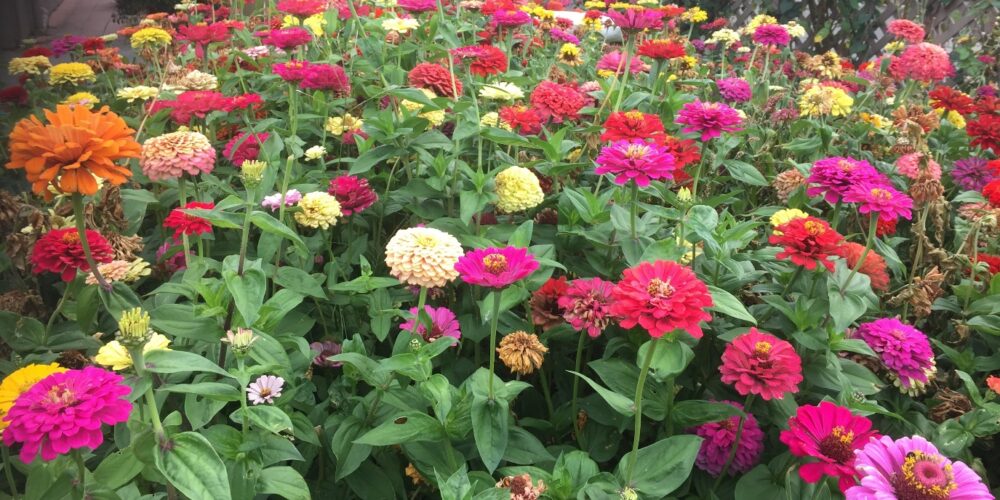
Lovely liriope and pesky couch grass
How do you pronounce liriope? I had to look it up. In UK English, it is pronounced lih-REE-o-pay, and that seems logical and true to the latin pronunciation I was taught. I found this clump in my garden almost overwhelmed by couch grass and decided I would dig it up, clean it up and replant it.
More trouble than it was worth? Should I have taken Roger’s advice, which was to dig it up, throw it away, clean the area of couch grass and buy something else to take the liriope’s place? Hard to say, because the clump split up to yield several plants, which grow from aromatic tubers. I have still to replant some of them, but I’m looking forward to having lots of these vivid purple, drought-tolerant plants.

How to get rid of Couch grass
Couch grass is a persistent and troublesome weed. When you see its roots, you can see why. It grows fine, mat like brown roots, but also sends out long white roots with clearly visible sections. Each section can produce a new couch grass plant. Its roots mingle with those of your favourite plants, making it difficult to dig out: you have to be super careful so that you don’t harm your good plants whilst fighting the bad ones. Trying to suppress it with mulch doesn’t work. You’ll find couch grass mother plants under rocks, sending out their white roots in all directions and over long distances to produce baby couch grass plants.
I find the best method is to patiently clear one small patch at a time. You’ll need some kind of tool. I like the three-pronged claw, because I can use it to comb through the soil, looking for those long white roots. You’ll also need gardening gloves and a kneeler or something to sit on. You’ll need to be as comfortable as possible, because this a long, slow, but absorbing and strangely satisfying task.
When you find the green leaves, loosen the soil underneath and pull the plant slowly and gently to extricate as much of the root as you can. When I have finished clearing a patch, I like to dump sawdust on it. Despite all my care, I know that I will have missed a few small pieces. When those small pieces grow again, the sawdust will have softened the soil and will make them easier to pull out. Couch seems to be particularly active in autumn and spring, so if you tackle it now, you will have less to deal with in the spring.
To save your aching body, warm up your knees and back first and clear small sections at a time, for maybe an hour a day. It’s good to time yourself, because it is such an absorbing task, you may forget to stand and stretch.
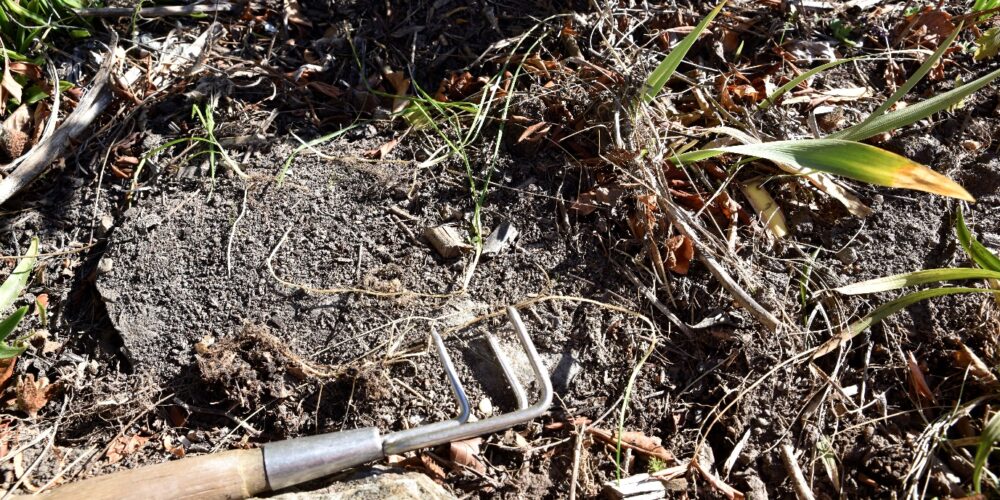
Plan for next spring
If you haven’t done so already, now is the time to plant bulbs for spring flowers.
Tulips to die for
Glamorous double
A couple of years ago, I bought a few varieties of tulips. I was interested to see whether they would come back each year. The most beautiful by far where Angelique, a gorgeous double variety that opens out in the sun. Sadly, they didn’t come back next year, but I would consider buying them again. The flowers lasted very well. I planted paeonies, lavender and gaura in that same bed, so it is possible they just got crowded out.
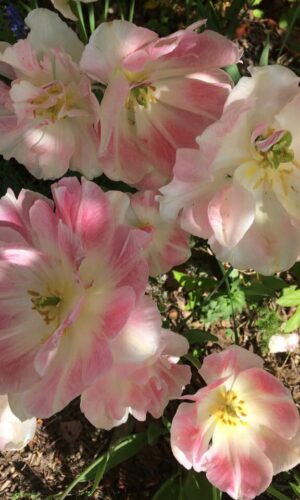
Tall, reliable viridiflora and pastel shades
I also planted Spring Green and Camargue, both tall tulips. They complemented each other very well and continued the pastel theme that I wanted in that border. They have returned every year, just as tall and with equally large flowers.
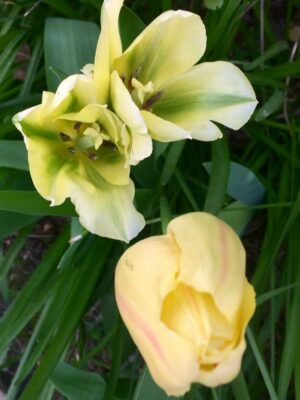
Splitting up perennials
Another job on my to-do list is to split up this charming white pulmonaria. I split it up a couple of years ago, turning one plant into a nice little patch of three. Now, I think I can get at least two little patches of three out of it. Some plants are invigorated by being split up, and this pulmonaria responded very well last time.
It’s in a long, narrow terraced bed with masses of muscari. I’d really like to establish more varieties of muscari but have not had much success so far. Never mind, there are worse things in life than having sheets of blue grape hyacinths.
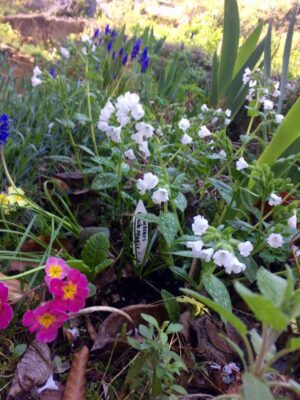
About the author

My name’s Pamela and a few years ago, at the age of 55, I made the decision to start a new adventure. I left the north-west of England, where I had lived all my life, and moved to New Zealand. I’ll tell you more about why I did that in a future article. I’m excited to be a guest blogger on Gardenize, and I’m looking forward to writing about my garden in beautiful, sunny Alexandra in Central Otago.
My garden here is about as different as it could get from the damp, shady garden I left behind. Central Otago is the hottest, driest, coldest area in New Zealand, as we have hot summers and cold winters, along with a semi-arid climate. The area is famous for its orchards and vineyards. It has many quaint little rural townships with pretty cottage gardens featuring the peonies, bearded irises, hollyhocks, lilies, roses and lavender that grow so well here.
The landscape is spectacular, with dry, rocky mountains and impossibly blue lakes and rivers. The dry mountains look barren, but they’re actually covered in tough little thyme plants: a great clue to what might grow well in the garden.
GARDENIZE GARDEN APP
Your garden friend with green fingers and photographic memory.
Gardenize is an app for gardening and cultivation that helps you to overview, understand and develop your garden and your crops. Organizing your garden makes it easier to succeed and your Gardenize app structures all information and make it searchable. You’ll get tips and inspiration from other Gardenizers around the world. All Gardenize basic features are free to use. You can download the app from the App Store or Google Play, or create an account directly in the web app in your browser. Get to know Gardenize better here.
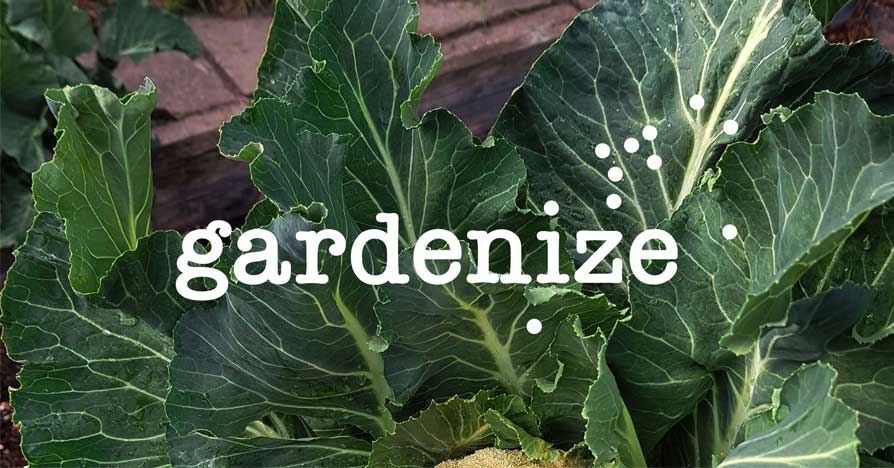
More from Gardenize
Images published on the Gardenize website belong to Gardenize AB and may not be used without permission.


